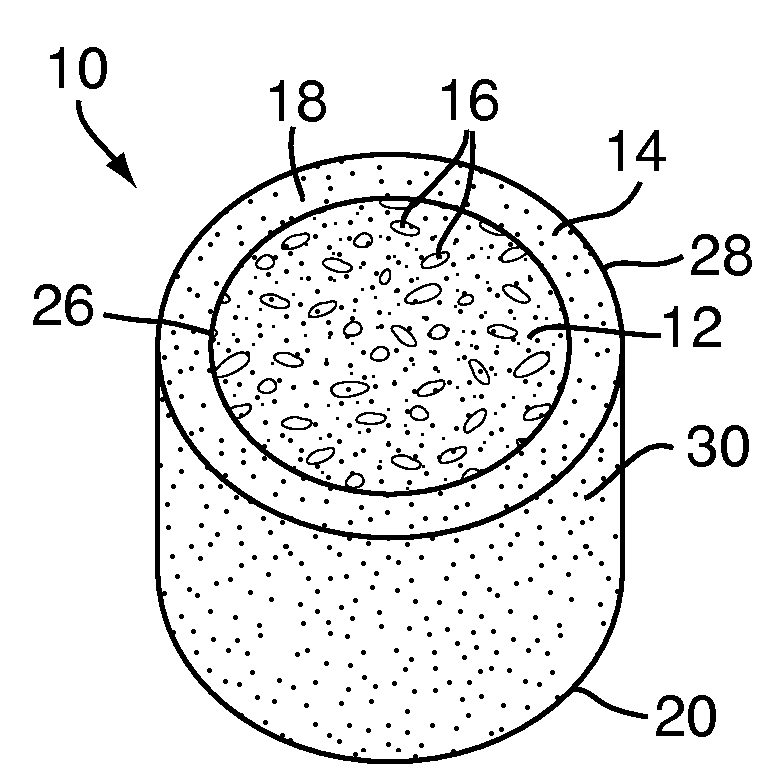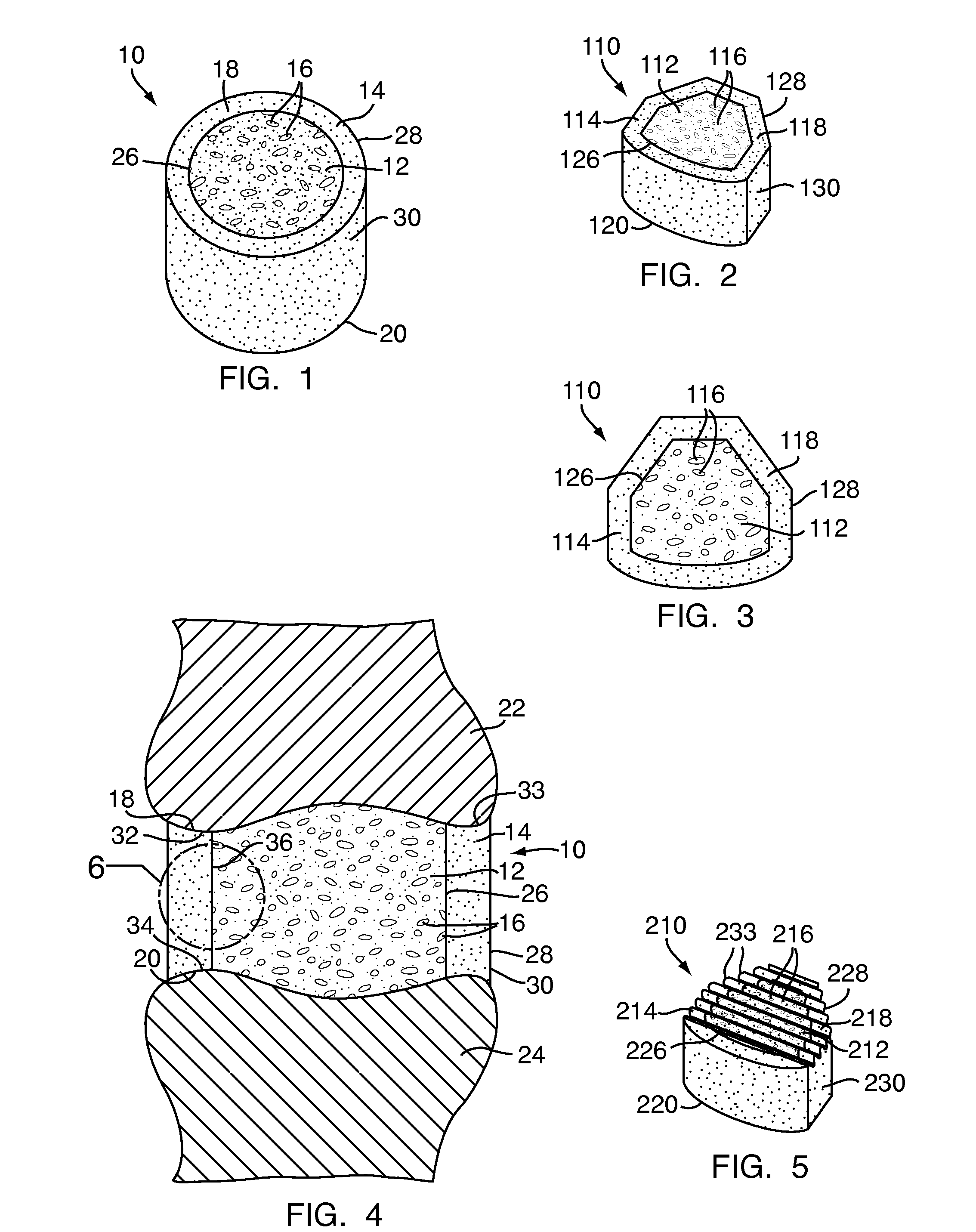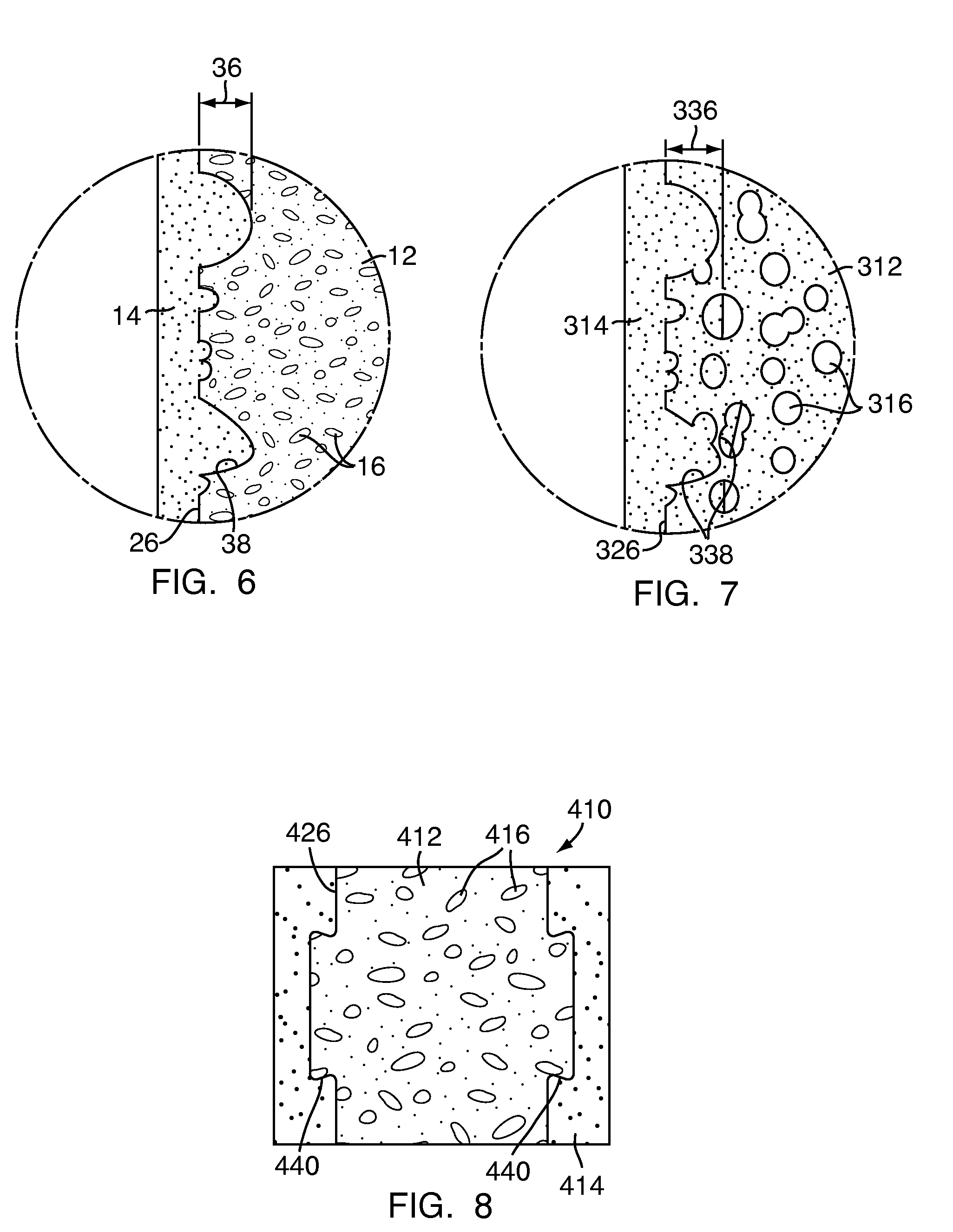Method for fabricating a multi-density polymeric interbody spacer
a multi-density polymer and interbody technology, applied in the field of synthetic bone polymer implants, can solve the problems of increased cost and product backorder, disadvantageous autograft procedures, undesirable spinal fusion applications, etc., and achieve the effects of promoting bone fusion, restoring height, and increasing the strength of the interbody spacer
- Summary
- Abstract
- Description
- Claims
- Application Information
AI Technical Summary
Benefits of technology
Problems solved by technology
Method used
Image
Examples
Embodiment Construction
[0048]Referring to FIG. 1, a multi-density polymeric interbody spacer 10, for replacing an intervertebral disc in spinal fusion surgery to restore height and promote bone fusion, includes a first density region 12 forming a central core and a second density region 14 surrounding the first density region 12. The first density region 12 and the second density region 14 are formed from a biocompatible polymeric foam material, which is discussed below in greater detail. The first density region 12 is formed to have a low density and a high porosity, providing a porous structure with pores 16 to allow bony ingrowth or osteoconduction after implantation of the multi-density polymeric interbody spacer 10 during spinal fusion surgery. The second density region 14 has a relative high density with low porosity to provide the multi-density polymeric interbody spacer 10 with strength to withstand spinal fusion forces, which, for example, may be in the vicinity of two thousand Newtons (2000 N) f...
PUM
| Property | Measurement | Unit |
|---|---|---|
| pressure | aaaaa | aaaaa |
| porosity | aaaaa | aaaaa |
| porosity | aaaaa | aaaaa |
Abstract
Description
Claims
Application Information
 Login to View More
Login to View More - R&D
- Intellectual Property
- Life Sciences
- Materials
- Tech Scout
- Unparalleled Data Quality
- Higher Quality Content
- 60% Fewer Hallucinations
Browse by: Latest US Patents, China's latest patents, Technical Efficacy Thesaurus, Application Domain, Technology Topic, Popular Technical Reports.
© 2025 PatSnap. All rights reserved.Legal|Privacy policy|Modern Slavery Act Transparency Statement|Sitemap|About US| Contact US: help@patsnap.com



